House made of solid stone in Lyon by Perraudin Architecture
French studio Perraudin Architecture has constructed a family house out of solid stone, claiming the material is "cheaper and faster" to build with than concrete.
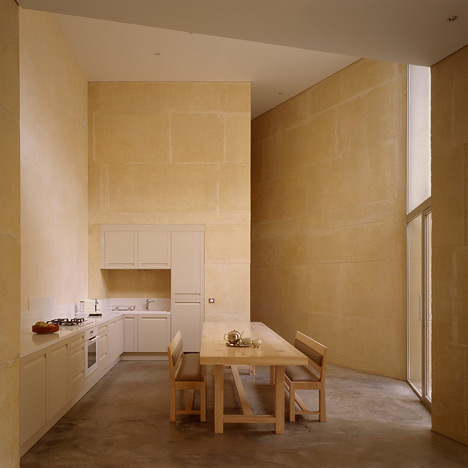
Architect Marco Lammers said sandstone limestone had been chosen for economic reasons. "Stone itself is not an expensive resource," he said. "Its manufacturing is. Therefore, the greater its mass, the lower its price and the greater its qualities."
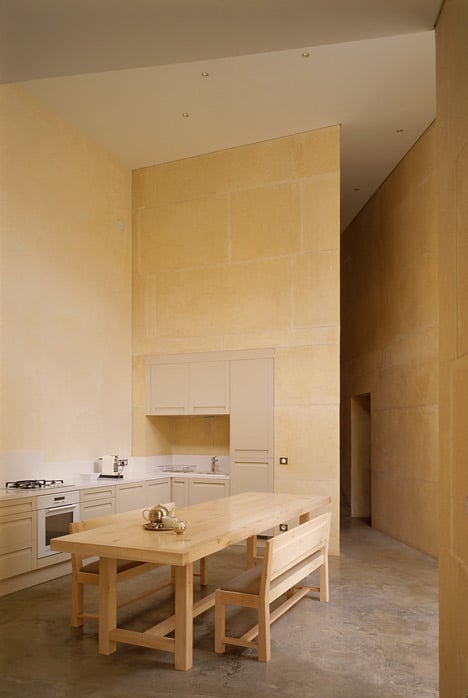
The house is located in Croix Rousse in Lyon - a dense former silk-weaving district - and is positioned in a small backland plot behind an art gallery.
Perraudin Architecture designed the building to match the typical local architecture, which features solid stone walls and windows large enough to fit silk looms through.
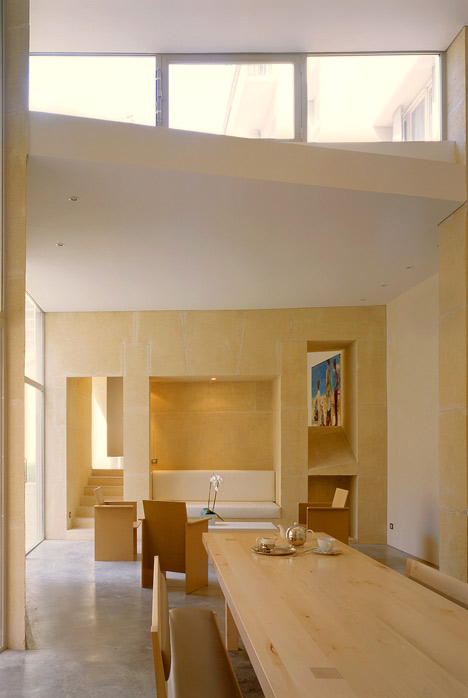
"Massive stone – when used with intelligence – allows to build cheaper and faster than ‘classical’ construction methods like [...] concrete," the architects claim.
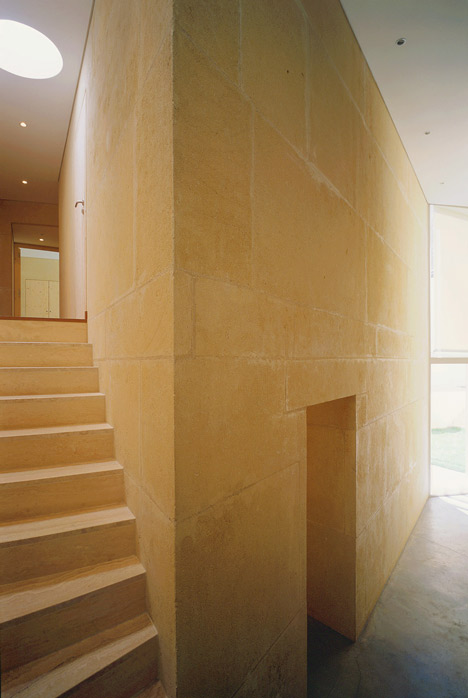
Lammers told Dezeen that using stone for load-bearing construction is far more efficient than applying it as a cladding material and creates energy-efficient buildings without high price tags.
"When used constructively in its raw massive form, stone is load-bearing, has great qualities of thermal mass, absorbs and releases surplus humidity, does not degrade and thus literally makes timeless architecture," he said.
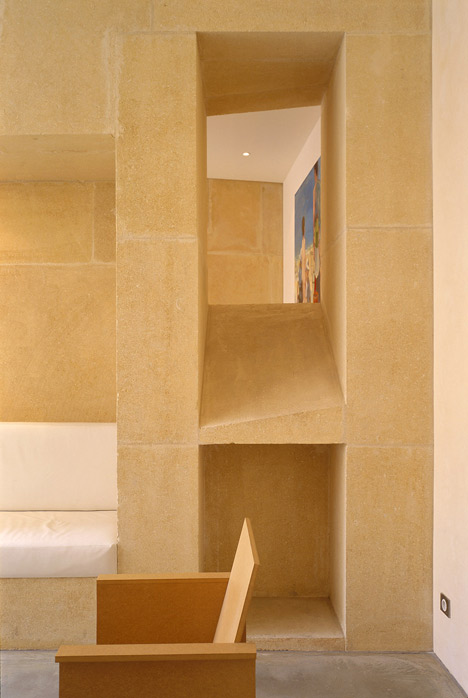
"Arguably, the least intelligent use of stone thinkable is to cut it in thin slices and to hang it decoratively on structural walls," he added.
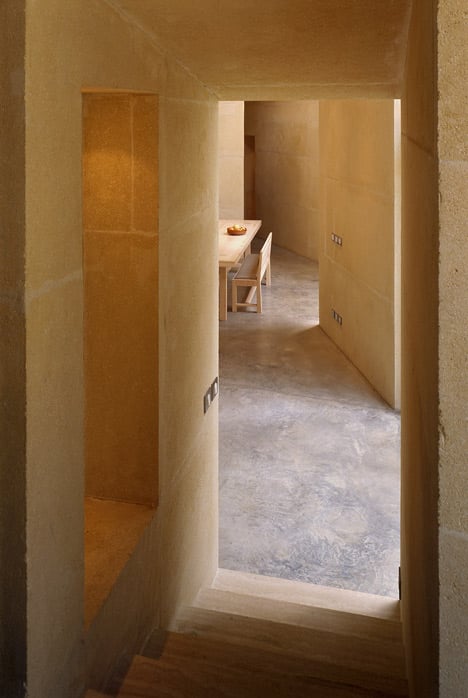
The two-storey residence has an L-shaped plan that wraps around a small garden and swimming pool. Both floors feature floor-to-ceiling windows, and the stone walls are left exposed on the inside as well as the outside.
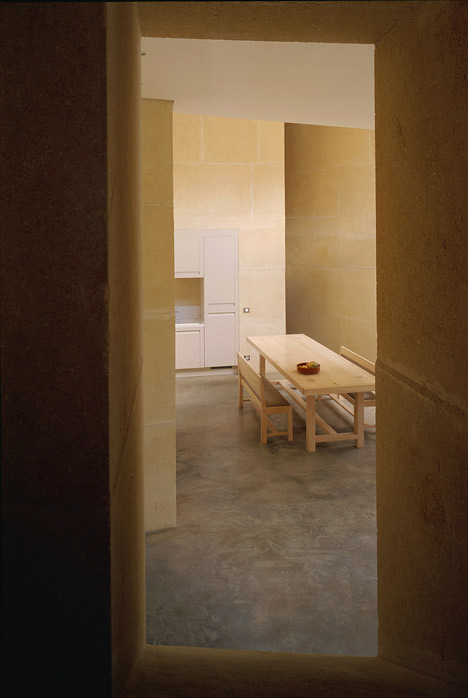
Ground floor spaces are arranged in a sequence where large family rooms are broken up by utility areas such as bathrooms and closets. These smaller spaces sit within compact stone volumes that support the flat roof overhead.
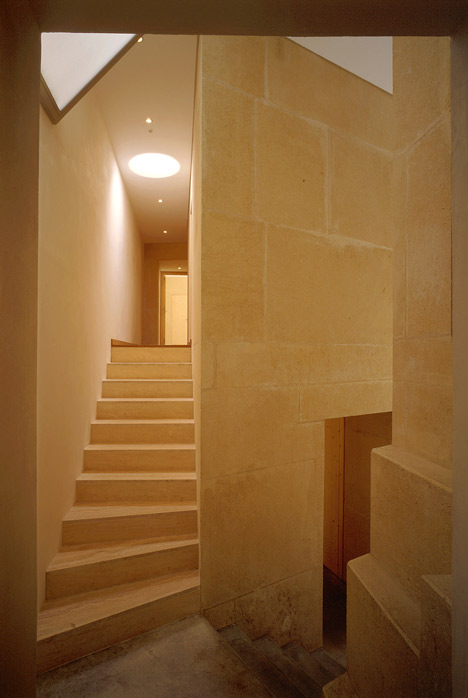
The architect added: "As stone is a subtractive rather than additive material, the domestic landscape architecture has a vocabulary of rifts, carvings, cracks and recesses."
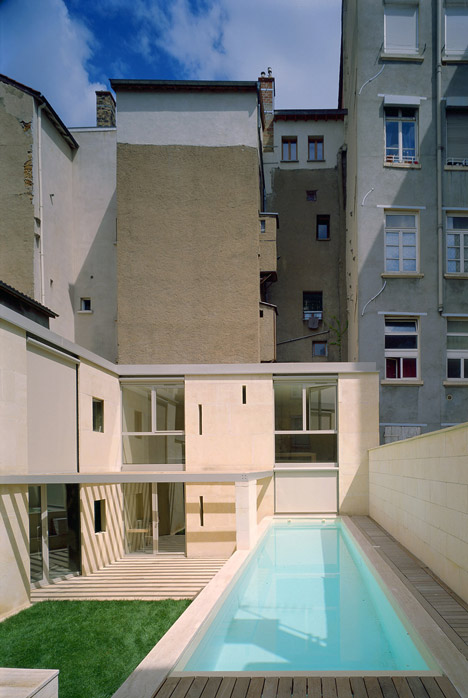
Here's more information from Perraudin Architecture:
Massive stone house, Lyon - Croix Rousse, France
This single family house finds itself in the hearth of Croix-Rousse, one of the densest neighbourhoods of Europe. The quarter is heavily marked by its thousands of former home-workshops of the "canuts" - the silk weavers of the 19th century Lyonnais silk manufacturing.
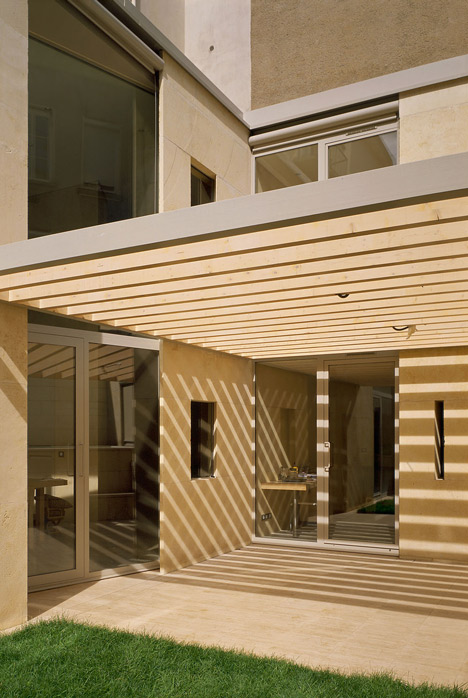
An urban tissue of high, massive stone buildings with large window openings carrying heavy oak floor structures that allow for the high open spaces needed for the Jacquard looms that were used for weaving the silk tissue.
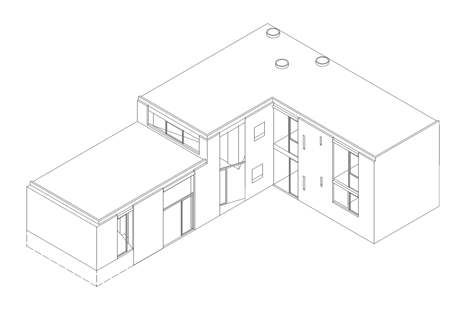
Located in a hearth of a housing block at the back of the art gallery it extends, the possibilities to build are strictly limited by complex urban regulations. Therefore, the envelope of the house follows exactly the authorised maximum volume, with its spaces 'carved out' of this given envelope.

Within this rigid shell, the spaces are positioned one after the other forming a continuous scenic route. Due to the limited depth of the maximum envelope, the layout is organised as alternating service and served spaces, with the service-spaces (bathroom, storage, stairs, toilets…) forming massive blocks of stone that support the roof. With its reinforced contrast between mass and emptiness, between lightness and darkness, with its pierced and recessing mass, the playful and liberated inner world contrasts strongly with the outer world blocked in regulation.
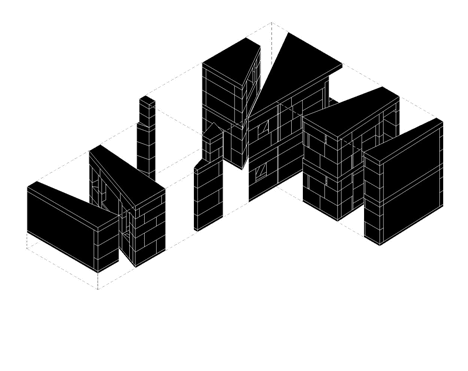
Being closer to physical geography than to architecture, the service blocks arrange themselves in a route connecting and separating one living space from another. As stone is a subtractive rather than additive material, the "domestic landscape architecture" has a vocabulary of rifts, carvings, cracks and recesses.
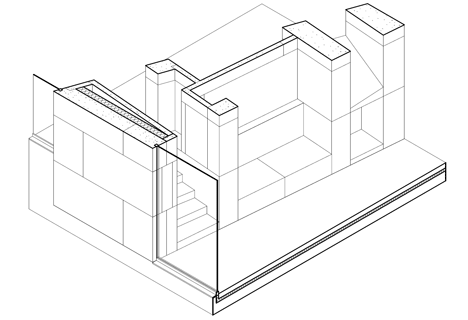
The service blocks define by contrast the living voids, orienting them towards the small garden they surround. The freshness generated by the basin completes this architectural geography.
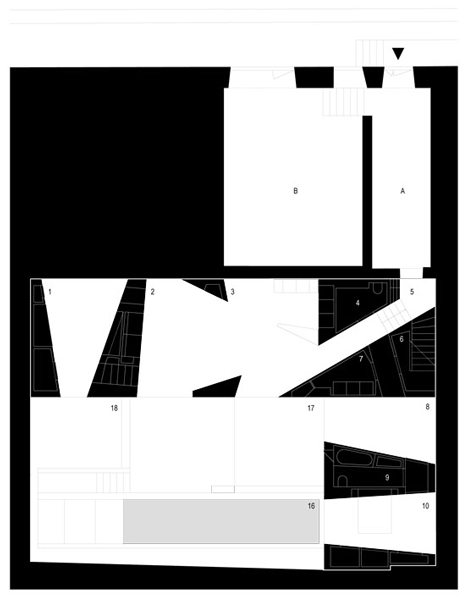
Structurally, all floors are supported by the service blocks, with each block uniquely built up out of massive - structural - stone. The large blocks of dimension stone making up its masonry have been sculpted and assembled block by block after being cut precisely in the quarry. Delivered element by element, they were quickly mounted as if it were blocks in a toy building game.
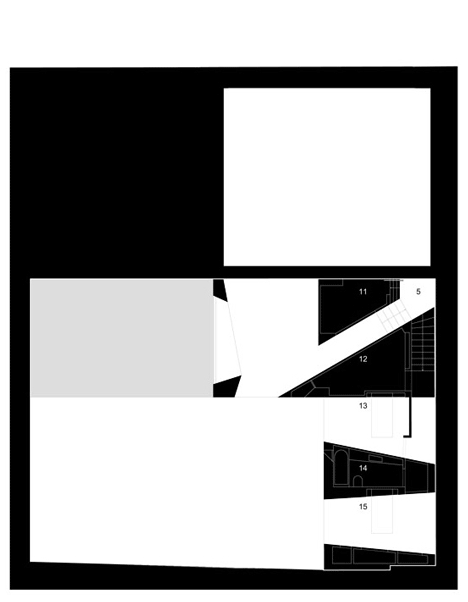
About Perraudin Architecte and the use of massive stone as primary construction material
Perraudin Architecture is an office with a long history in forefront sustainable architecture – with as most notable example the Akademie Mont Cenis (Herne, Germany, 1999, awarded with the Holzbaupreis and the European Solar Prize, Prize for Solar Building and of the first large energy-neutral buildings).
Since 1998 the office rediscovered massive, structural stone as contemporary building material, starting to use a standardised module of large blocks of 2,00 x 1,00 x 0,50 meter of massive stone – or half of the unit size of stone as extracted directly from a quarry – as primary (structural) building material. Since, the office has proved the potential of massive stone as an elegant, sustainable, economical, and widely available local material in numerous of its buildings.
Most notable is the construction of 20 units of social housing in Cornebarrieu (project nominated for the European Union Prize for Contemporary Architecture Mies van der Rohe Award 2013, the Equerre d’Argent 2011, and winner of the Prix Développement Durable - Concours d’architecture Pierre Naturelle 2011). It proves massive stone – when used with intelligence – allows to build cheaper and faster than ‘classical’ construction methods like the use of armed concrete, all the while using very limited energy to extract and place (dry construction!) and having great tectonic and tactile qualities.
As each building we had built so far was based on the rather strict geometric base, this massive stone house in Lyon was the first project to allow us to demonstrate the extreme flexibility of stone, exploiting to the maximum its plastic qualities.